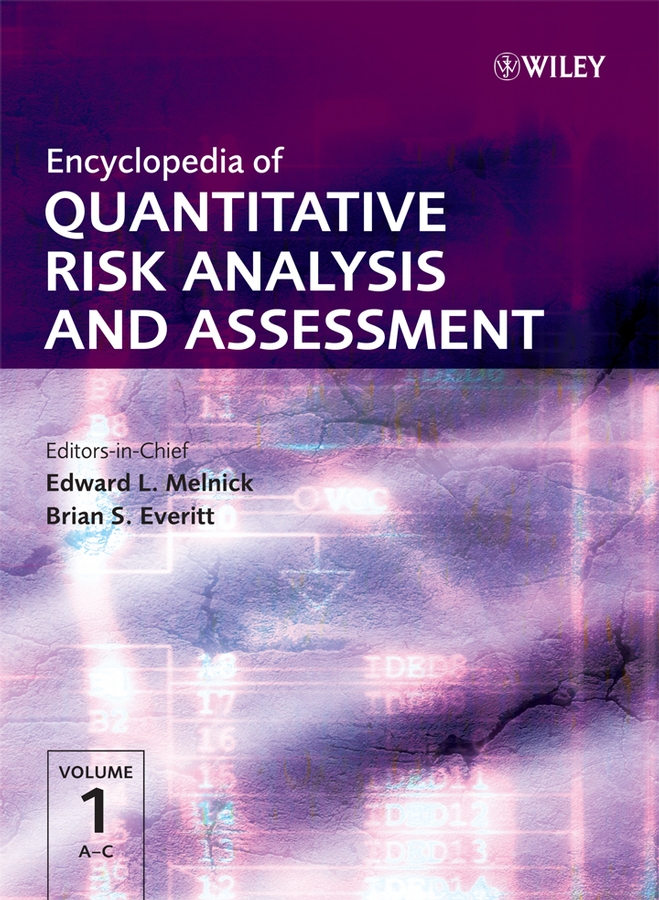Abstract
An area of growing importance in quantitative risk analysis concerns the combination of information from diverse sources. A common rubric for combining the results of independent studies is meta-analysis. The goal of the methodology is to bring together results of different studies, reanalyze the disparate results within the context of their common endpoints, increase the sensitivity of the analysis to detect the presence of adverse effects, and provide a quantitative analysis of the phenomenon of interest based on the combined data. This entry discusses some basic methods in meta-analytic calculations, and includes commentary on how to combine or average results from multiple models applied to the same set of data.
References
- 1
Glass, G.V.
(1976).
Primary, secondary, and meta-analysis of research,
Educational Researcher
5,
3–8.
10.3102/0013189X005010003 Google Scholar
- 2 Rosenthal, R. (1979). The “file drawer problem” and tolerance for null results, Psychological Bulletin 86, 638–641.
- 3 Thornton, A. & Lee, P. (2000). Publication bias in meta-analysis: its causes and consequences, Journal of Clinical Epidemiology 53, 207–216.
- 4 Tweedie, R.L. (2002). Meta-analysis, in Encyclopedia of Environmetrics, A.H. El-Shaarawi & W.W. Piegorsch, eds, John Wiley & Sons, Chichester, Vol. 3, pp. 1245–1251.
- 5 Baker, R. & Jackson, D. (2006). Using journal impact factors to correct for the publication bias of medical studies, Biometrics 56, 785–792.
- 6 Copas, J. & Jackson, D. (2004). A bound for publication bias based on the fraction of unpublished studies, Biometrics 60, 146–153.
- 7 Shi, J.Q. & Copas, J.B. (2004). Meta-analysis for trend estimation, Statistics in Medicine 23, 3–19.
- 8 Fisher, R.A. (1948). Combining independent tests of significance, American Statistician 2, 30.
- 9 Stouffer, S.A., Suchman, E.A., DeVinney, L.C., Star, S.A. & Williams Jr, R.M. (1949). The American Soldier: Adjustment During Army Life, Princeton University Press, Princeton, Vol. I.
- 10 Tippett, L.H.C. (1931). The Methods of Statistics, Williams & Norgate, London.
- 11 Wilkinson, B. (1951). A statistical consideration in psychological research, Psychological Bulletin 48, 156–158.
- 12 Hedges, L.V. & Olkin, I. (1985). Statistical Methods for Meta-Analysis, Academic Press, Orlando.
- 13 Gaver, D.P., Draper, D., Goel, P.K., Greenhouse, J.B., Hedges, L.V., Morris, C.N. & Waternaux, C. (1992). Combining Information: Statistical Issues and Opportunities for Research, The National Academy Press, Washington, DC.
- 14 Cohen, J. (1969). Statistical Power Analysis for the Behavioral Sciences, Academic Press, New York.
- 15 Umbach, D.M. (2002). Effect size, in Encyclopedia of Environmetrics, A.H. El-Shaarawi & W.W. Piegorsch, eds, John Wiley & Sons, Chichester, Vol. 2, pp. 629–631.
- 16 Piegorsch, W.W. & Bailer, A.J. (2005). Analyzing Environmental Data, John Wiley & Sons, Chichester.
- 17 Ashraf, W. & Jaffar, M. (1997). Concentrations of selected metals in scalp hair of an occupationally exposed population segment of Pakistan, International Journal of Environmental Studies, Section A 51, 313–321.
- 18
Cochran, W.G.
(1937).
Problems arising in the analysis of a series of similar experiments,
Journal of the Royal Statistical Society, Supplement
4,
102–118.
10.2307/2984123 Google Scholar
- 19
Hardy, R.J. &
Thompson, S.G.
(1998).
Detecting and describing heterogeneity in meta-analysis,
Statistics in Medicine
17,
841–856.
10.1002/(SICI)1097-0258(19980430)17:8<841::AID-SIM781>3.0.CO;2-D CAS PubMed Web of Science® Google Scholar
- 20
Wood, M.
(2005).
Statistical inference using bootstrap confidence intervals,
Significance
1,
180–182.
10.1111/j.1740-9713.2004.00067.x Google Scholar
- 21 Fisher, R.A. (1925). Theory of statistical estimation, Proceedings of the Cambridge Philosophical Society 22, 700–725.
- 22 Birge, R.T. (1932). The calculation of errors by the method of least squares, Physical Review 16, 1–32.
- 23 Buckland, S.T., Burnham, K.P. & Augustin, N.H. (1997). Model selection: an integral part of inference, Biometrics 53, 603–618.
- 24 Akaike, H. (1973). Information theory and an extension of the maximum likelihood principle, in Proceedings of the Second International Symposium on Information Theory, B.N. Petrov & B. Csaki, eds, Akademiai Kiado, Budapest, pp. 267–281.
- 25 Schwarz, G. (1978). Estimating the dimension of a model, Annals of Statistics 6, 461–464.
- 26 Burnham, K.P. & Anderson, D.A. (2002). Model Selection and Multi-Model Inference: A Practical Information-Theoretic Approach, 2nd Edition, Springer-Verlag, New York.
- 27 Kang, S.-H., Kodell, R.L. & Chen, J.J. (2000). Incorporating model uncertainties along with data uncertainties in microbial risk assessment, Regulatory Toxicology and Pharmacology 32, 68–72.
- 28 Morales, K.H., Ibrahim, J.G., Chen, C.-J. & Ryan, L.M. (2006). Bayesian model averaging with applications to benchmark dose estimation for arsenic in drinking water, Journal of the American Statistical Association 101, 9–17.
- 29 Wheeler, M.W. & Bailer, A.J. (2007). Properties of model-averaged BMDLs: a study of model averaging in dichotomous risk estimation, Risk Analysis 27, 659–670.
Citing Literature
Encyclopedia of Quantitative Risk Analysis and Assessment
Browse other articles of this reference work:



